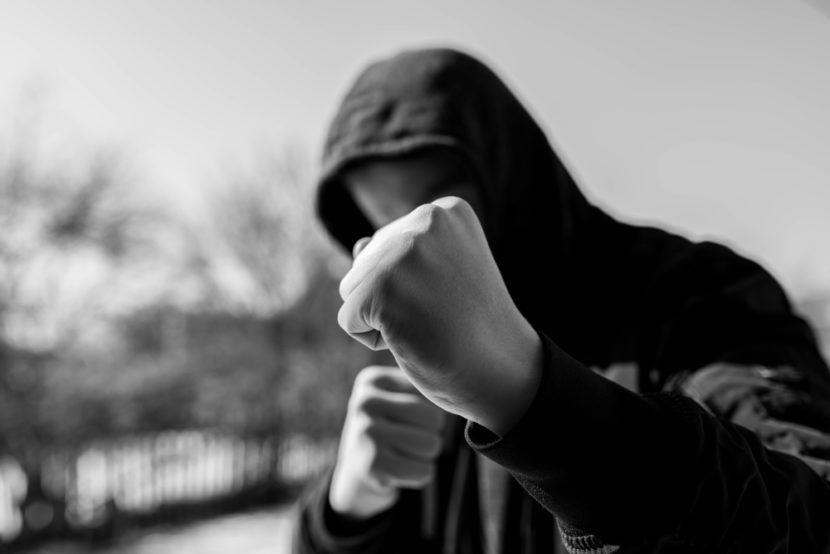Criminal gangs in Sweden are deliberately recruiting children, sometimes as young as 10, to carry out violent acts, transport drugs, and handle weapons. They target vulnerable children where child protection systems fail to provide timely or effective safeguards, drawing them into drug trafficking, armed violence, and other crimes. Despite legal reforms, such as Sweden’s 2023 law criminalizing the recruitment of children into crime, and the country’s commitment to the UN Convention on the Rights of the Child, minors continue to face severe rights violations.
The growing involvement of children in Sweden’s organized crime
In 2024, approximately 1,700 children and adolescents under the age of 18 were identified as active members of criminal networks in Sweden, making up 13% of the country’s organized crime actors (Swedish Police Authority, 2024). According to the Swedish National Council for Crime Prevention (Brå), the number of children involved in shootings leading to injury or death has also tripled over the past five years, rising from 9 in 2019 to 29 by mid-2024. Within the 15–20 age group, serious violent crime suspects increased by nearly 400% between 2014 and 2023 (Ekman, 2025).
One police investigation revealed how a 19-year-old gang member offered an 11-year-old boy 150,000 kronor (approx. €13,600) to carry out a murder. The boy had posted on Instagram, “I can’t wait for my first dead body,” to which the recruiter replied, “Stay motivated, it’ll come” (France 24, 2024).
Another case involved a 16-year-old who fatally shot a father in his home, then turned the gun on the man’s wife and two-year-old child, both of whom survived. The next day, he killed two more women, relatives of a rival gang member.
He received a record 12-year youth sentence — the maximum allowed — illustrating how gangs exploit Sweden’s age-based sentencing rules: offenders under 15 cannot be prosecuted, while those aged 15–17 face shorter sentences than adults, even for the most serious crimes (Rothwell, 2024).
“Nowadays, everybody wants to be a murderer. It’s incredibly sad to see that this is what kids aspire to with some “crimfluencers” glorifying criminal lifestyles on TikTok.”
— Viktor Grewe, a 25-year-old former gang member (France 24, 2024)
Such “crimfluencer” content is part of a wider trend dubbed “performance crime,” where offenses are filmed and shared to gain notoriety. Just as the viral “Kia Challenge” spurred car thefts, gang-linked TikTok and Instagram accounts normalize shootings, drug deals, and displays of weapons, turning crime into recruitment material (Revell, 2023).
How criminal networks systematically target Sweden’s most vulnerable children
Criminal networks in Sweden are using children, often as young as 10, in serious criminal activity. They are valued not only for carrying out risky tasks like drug running, weapon handling, and violent assaults, but also because their age can shield older gang members from detection (Government of Sweden, 2023).
Children are not caught up in criminal activity by chance; they are systematically targeted and recruited. Organized networks use older youths or peers to draw in younger children, often through social media or schools, where they are offered a sense of belonging (Sweden’s National Board of Health and Welfare, 2023).
“The group chats have adventurous and exciting names, like ‘bombing today’ and ‘who wants to shoot someone in Stockholm.’ It’s not like before, when they used encrypted phones on a closed network. Now you can take a gang job on Snapchat.”
— Lisa dos Santos, a Swedish prosecutor (The Telegraph, 2024).
Those most at risk often come from unstable or unsafe home environments, have prior involvement with social services, or experience neglect, trauma, and exclusion. Criminal groups exploit these vulnerabilities by offering material rewards, protection, or validation, filling a critical gap in emotional security and belonging left by weak family or institutional support (Sweden’s National Board of Health and Welfare, 2023).
Once involved, children’s roles are not marginal, they often perform critical tasks within the network. The use of minors in serious crimes offers strategic advantages to criminal groups: children are less likely to attract police attention and, under current Swedish law, may face limited consequences due to their age (Government of Sweden, 2023).
In Sweden, children under the age of 15 cannot be convicted of a crime, as they are considered legal minors. Those aged 15–17 may receive custodial sentences only in exceptional cases, usually for serious offenses (Ekman, 2025).
The impact of criminal recruitment on youth development
Children recruited into criminal networks often face major disruptions in their education. Many disengage from school entirely, either due to pressure from gang members, fear of violence, or lack of motivation (Macfarlane, 2018).

The loss of structure affects more than academics. It weakens protective factors like emotional stability, social skills, and future job readiness. Once outside the school system, many young people fall further into criminal activity, making it even harder to return to education or access future opportunities (Macfarlane, 2018).
Beyond academic disruption, involvement in criminal networks often exposes young people to severe trauma. This trauma can trigger symptoms like chronic anxiety, emotional numbness, or irritability, all of which interfere with learning and personal growth. Some youth may also develop PTSD or depression, which can derail their long-term development (NCTSN, n.d.).
This trauma traps children in a cycle that is hard to escape. The emotional and psychological wounds make it harder to trust others, seek help, or imagine a life outside the gang. That vulnerability is exactly what criminal networks exploit, drawing them back into dangerous situations and reinforcing their dependence on the group (NCTSN, n.d.).
How new laws and strategies target gang recruitment of children
Before 2022, offenders aged 18–20 automatically received lighter sentences than adults —often up to half the usual prison term, under a rule known as the “youth rebate.” In January 2022, Sweden ended this automatic reduction for serious crimes carrying at least one year in prison (Hofverberg, 2023).
Now, young adults convicted of these offenses receive the same sentences as older adults, while special youth penalties remain only for those under 18. The change was intended to address concerns over lenient punishments and align Sweden with other Nordic countries (Hofverberg, 2023).
Moreover, since July 2023, it has been a stand-alone crime in Sweden to involve anyone under 18 in criminal activity, punishable by up to four years in prison. The law applies whether the minor is coerced or agrees to take part, closing a loophole that previously allowed adults to avoid prosecution if the child participated “willingly.” (Hofverberg, 2023).
In February 2024, Sweden introduced its first nationwide plan to fight organized crime. It focuses on five goals: stopping people from entering criminal careers, cutting access to illegal guns, breaking the flow of criminal money, making communities stronger against gang influence, and improving information-sharing between agencies. The plan involves police, local authorities, businesses, and community groups, with the aim of closing off the weak points that gangs use to operate (Government of Sweden, 2024).
Looking ahead, from July 2025, a new Social Services Act will aim to improve prevention and better align with the UN Convention on the Rights of the Child. The government is also considering tougher penalties for offenders under 18 and plans to open special youth prisons for 15–17-year-olds in 2026 (European Commission, 2025).
When protection systems fail Sweden’s children
At the high-level Nordic Child Protection Conference in Stockholm in June 2025, experts and survivors highlighted that Sweden still struggles to prevent and respond effectively to child exploitation. Survivors described how the absence of early intervention, trust, and consistent support left them vulnerable for years (Protect Children, 2025).
These same systemic weaknesses are exploited by criminal gangs, which target children who feel unsafe or unseen. This makes the recruitment of children into criminal networks not only a pressing social issue but also a direct violation of the UN Convention on the Rights of the Child, to which Sweden has been a signatory since 1990.
The treaty sets out a broad range of rights, including Article 19, which requires states to protect children from all forms of violence, abuse, neglect, and exploitation; Article 33, which addresses protection from drug trafficking and related exploitation; and Article 40, which guarantees the fair and dignified treatment of children in conflict with the law. Persistent recruitment of minors into violent criminal activity risks breaching multiple CRC provisions, both as an international commitment and as binding national law.
Even though these legal protections are clear, violations remain in practice. Authorities report that children as young as 12 are being openly recruited through social media platforms, with assignments such as vandalism, spying, and even murder treated like “extra jobs.” Many of these crimes are orchestrated remotely by gang leaders based abroad, making prevention and accountability even more difficult (Politico, 2025).
“We see 12-, 13- and 14-year-olds carry out horrific, violent assignments as if they were extra jobs. The assignments are communicated completely openly on digital marketplaces. Crime is often controlled by gang criminals who are abroad.”
– Petra Lundh, Sweden’s National Police Chief (Politico, 2025).
A call for comprehensive action to protect the children
Sweden has adopted a range of local-level strategies to prevent youth recruitment into gangs. Crime Prevention Councils now operate in most municipalities, coordinating efforts between police, schools, and social services. Under the Municipal Responsibility for Crime Prevention Act, local authorities are required to analyze crime trends and create updated prevention plans twice a year (Ahlander, 2024).
The Swedish National Council for Crime Prevention (Brå) reports that these efforts have helped reduce youth recruitment in some high-risk Stockholm areas. However, implementation remains uneven, and many municipalities lack the resources to fully carry out these plans (Ahlander, 2024).
However, to build on existing efforts, several targeted actions could strengthen Sweden’s response to youth gang crime:
- Expand Group Violence Intervention (GVI) programs, which focus on collective accountability within gangs rather than individual punishment. The model has shown promising results, including an observed 25% drop in shootings in Malmö (Stockholm University – Department of Criminology, 2023).
- Invest heavily in schools in vulnerable areas. Strong educational outcomes are a powerful protective factor against gang involvement, but many at-risk communities have underfunded schools and fewer qualified teachers.
- Reassess drug policy enforcement. Much of Sweden’s gang violence is linked to competition over drug markets. Reducing the focus on prosecuting minor cannabis possession could free up police resources for more serious crimes.
- Avoid counterproductive punitive measures. Expanding prison sentences for youth has little deterrent effect and may push more children into criminal pathways. Instead, Sweden’s response must prioritize prevention, rehabilitation, and social support (Stockholm University – Department of Criminology, 2023).

At Humanium, we stand for every child’s right to a safe, carefree childhood — free from violence, fear, and exploitation. No child should be pulled into a world of crime. Join us in protecting their future: donate, volunteer, or sponsor a child today.
Written by Lidija Misic
Bibliography:
Ahlander Johan (2024), Nordic countries join forces to combat spread of Swedish gang crime. Retrieved from Reuters at https://www.reuters.com/world/europe/nordic-countries-join-forces-combat-spread-swedish-gang-crime-2024-08-14/, accessed on August 7, 2025.
Ekman Tiina (2025), Alarming rise in youth crime in Sweden. Retrieved from International Youth Service of the Federal Republic of Germany (IJAB) at https://ijab.de/en/topics/internationalisation-of-youth-services/current-articles-on-internationalisation-of-youth-services/alarming-rise-in-youth-crime-in-sweden#:~:text=According%20to%20the%20Swedish%20Police,(Swedish%20Police%20Authority%202024)., accessed on August 7, 2025.
European Commission (2025), Sweden: Social Inclusion. Retrieved from the European Commission at https://national-policies.eacea.ec.europa.eu/youthwiki/chapters/sweden/48-current-debates-and-reforms, accessed on August 13, 2925.
France 24 (2024), Despair in Sweden as gangs recruit kids as contract killers. Retrieved from France 24 at https://www.france24.com/en/live-news/20241128-despair-in-sweden-as-gangs-recruit-kids-as-contract-killers?utm_source=chatgpt.com, accessed on August 7, 2025.
Government of Sweden (2023), Resistance and decisive action – a national strategy against organised crime. Retrieved from the Government of Sweden at https://www.government.se/contentassets/1388901d4cbe4826b335563ad92f32f7/resistance-and-decisive-action–a-national-strategy-against-organised-crime-government-communication-20232467/, accessed on August 7, 2025.
Government of Sweden (2024), Resistance and decisive action – Sweden’s national strategy against organised crime. Retrieved from the Government of Sweden at https://www.government.se/press-releases/2024/02/resistance-and-action–swedens-national-strategy-against-organised-crime, accessed on August 13, 2025.
Hofverberg Elin (2023), Sweden: Law Criminalizing Recruitment of Children into Criminal Activity Enters into Force. Retrieved from Library of Congress at https://www.loc.gov/item/global-legal-monitor/2023-09-11/sweden-law-criminalizing-recruitment-of-children-into-criminal-activity-enters-into-force, accessed on August 13, 2025.
Hofverberg Elin (2023), Sweden: New Sentencing Rules Remove Exceptions for Young Offenders. Retrieved from Library of Congress at https://www.loc.gov/item/global-legal-monitor/2022-01-10/sweden-new-sentencing-rules-remove-exceptions-for-young-offenders, accessed on August 13, 2025.
Jochecová Ketrin (2025), Sweden aims to introduce law letting police wiretap children as gang violence rises. Retrieved from Politico at https://www.politico.eu/article/sweden-bombing-gang-violence-wiretap-children-teenagers/, accessed on August 7, 2025.
Macfarlane Alastair (2018), Gangs and Adolescent Mental Health: a Narrative Review. retrieved from National Library of Medicine at https://pmc.ncbi.nlm.nih.gov/articles/PMC7163845/, accessed on August 7, 2025.
NCTSN (n.d.), Your Child and Gangs: What You Need to Know about Trauma – Tips for Parents. Retrieved from NCTSN at https://www.nctsn.org/sites/default/files/resources/fact-sheet/your_child_and_gangs_what_you_need_to_know_about_trauma_parents.pdf, accessed on August 7, 2025.
Protect Children (2025), “Dare to see, dare to hear, but above all, dare to do something”- new study reveals critical gaps in Sweden’s systems for preventing child sexual abuse and exploitation. Retrieved from Protect Children at https://www.suojellaanlapsia.fi/en/post/pressrelease-02062025, accessed on August 7, 2025.
Revell Eric (2023), TikTok, social media fuel ‘performance crime’. Retrieved from Fox Business at https://www.foxbusiness.com/economy/tiktok-social-media-fuel-performance-crime, accessed on August 13, 2025.
Rothwell James (2024), Children carry out surge of contract killings as Swedish gangs exploit loophole in the law. Retrieved from Telegraph at https://www.telegraph.co.uk/world-news/2024/11/30/sweden-gangs-child-contract-killings-foxtrot-young-offender/, accessed on August 7, 2025.
Stockholm University (2023), How could Sweden put an end to its deadly wave of gang crime? Retrieved from Department of Criminology at https://www.su.se/department-of-criminology/news/how-could-sweden-put-an-end-to-its-deadly-wave-of-gang-crime-1.660480, accessed on August 7, 2025.
The Swedish National Council for Crime Prevention (2023), Children and Young People in Criminal Networks. Retrieved from the Swedish National Council for Crime Prevention at https://bra.se/download/18.3808406a192bd2f0b723548/1730213224915/2023_13-Barn-och-unga-i-kriminella-natverk.pdf, accessed on August 7, 2025.
United Nations (n.d.), Convention on the Rights of the Child. Retrieved from UN at https://www.ohchr.org/en/instruments-mechanisms/instruments/convention-rights-child, accessed on August 7, 2025.


